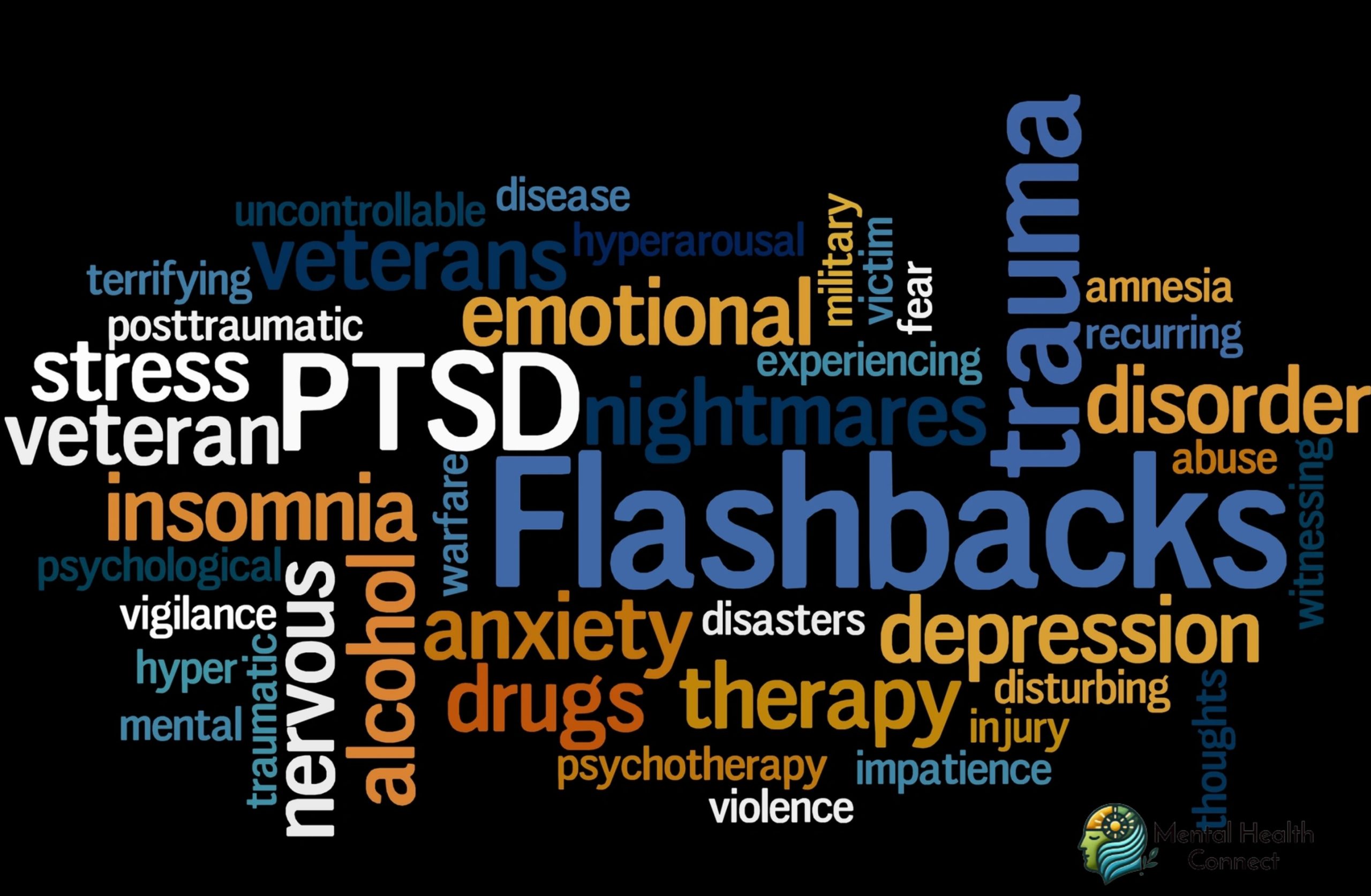PTSD Signs and Symptoms: What to Look For

Post-Traumatic Stress Disorder (PTSD) affects approximately 7-8% of the population at some point in their lives. Yet, despite its prevalence, PTSD remains frequently misunderstood and sometimes goes unrecognized even by those experiencing it. This complex psychological condition develops in response to traumatic events – from combat exposure and natural disasters to serious accidents, physical assault, or witnessing violence. Understanding the signs and symptoms of PTSD is crucial for early recognition and intervention.
Beyond the Stereotype
Popular media often portrays PTSD through dramatic flashbacks and combat veterans, but the reality is much more nuanced. PTSD can affect anyone who has experienced or witnessed trauma, including children, and its manifestations vary widely between individuals. While some symptoms may appear immediately after the traumatic event, others might emerge months or even years later, sometimes triggered by reminders of the original trauma.
The Four Symptom Categories
Mental health professionals typically categorize PTSD symptoms into four distinct groups. Understanding these categories can help identify when normal stress responses to trauma have evolved into something requiring professional attention.
1. Intrusion Symptoms
Intrusion symptoms involve unwanted re-experiencing of the traumatic event and can include:
- Flashbacks: Vivid episodes where the person feels or acts as though the trauma is happening again. These can range from brief moments of feeling transported back to the event to complete dissociative episodes.
- Nightmares: Distressing dreams related to the traumatic experience that disrupt sleep and cause significant anxiety.
- Intrusive memories: Unwanted, distressing thoughts or mental images of the trauma that appear spontaneously.
- Psychological distress: Intense emotional reactions when exposed to reminders of the trauma.
- Physiological reactions: Physical responses like rapid heartbeat, sweating, or nausea when encountering trauma reminders.
2. Avoidance
Avoidance behaviors develop as protective mechanisms but often become limiting and disruptive. They include:
- Avoiding trauma-related thoughts or feelings: Pushing away memories or emotions connected to the traumatic event.
- Avoiding external reminders: Deliberately staying away from people, places, conversations, activities, objects, or situations that trigger memories of the trauma.
- Inability to recall aspects of the trauma: Memory gaps about important elements of the traumatic experience.
- Emotional numbing: Detachment from feelings, relationships, and activities that once brought joy.
3. Negative Alterations in Cognition and Mood
Trauma can fundamentally change how a person thinks about themselves and the world:
- Persistent negative beliefs: Developing distorted, negative thoughts about oneself, others, or the world (e.g., “I am bad,” “No one can be trusted,” “The world is completely dangerous”).
- Distorted cognitions about cause or consequences: Blaming oneself or others inappropriately for causing the trauma or its aftermath.
- Persistent negative emotional state: Ongoing fear, horror, anger, guilt, or shame.
- Diminished interest in activities: Loss of enjoyment in previously pleasurable activities.
- Feeling detached or estranged: A sense of disconnection from others, even close family and friends.
- Inability to experience positive emotions: Difficulty feeling happiness, satisfaction, love, or other positive emotions.
4. Alterations in Arousal and Reactivity
PTSD often involves significant changes in baseline arousal and reactivity:
- Irritability or angry outbursts: Seemingly disproportionate reactions to minor provocations, sometimes with little or no provocation.
- Reckless or self-destructive behavior: Engaging in activities that pose risk of harm.
- Hypervigilance: Being constantly on alert for danger, often scanning the environment for threats.
- Exaggerated startle response: Jumpy reactions to unexpected noises or movements.
- Concentration problems: Difficulty focusing on tasks or conversations.
- Sleep problems: Include difficulty getting to sleep, remaining asleep, or having a good night’s sleep.
Less Recognized Signs of PTSD
Beyond the diagnostic criteria, several additional signs might indicate PTSD:
- Somatic complaints: Unexplained physical symptoms like headaches, digestive issues, or chronic pain.
- Dissociation: Feeling disconnected from oneself or surroundings, sometimes described as feeling “unreal” or observing oneself from outside one’s body.
- Substance use: Using alcohol or drugs to manage symptoms or emotions.
- Complex shame responses: Deep-seated feelings of worthlessness, contamination, or being permanently damaged.
- Trust issues: Difficulty forming or maintaining relationships due to expectations of harm or betrayal.
- Anniversary reactions: Intensification of symptoms around dates or seasons associated with the trauma.
PTSD in Different Populations
PTSD manifestations can vary significantly across different groups:
Children and Adolescents
Children may display unique symptoms, including:
- Regression to earlier developmental behaviors
- Recreating the trauma through repetitive play
- Frightening dreams without recognizable content
- New onset of separation anxiety
- Behavioral problems or declining school performance
Combat Veterans
Military personnel might experience:
- Combat-specific guilt or shame
- Heightened moral injury (distress about actions that violated moral beliefs)
- Difficulty reintegrating into civilian life
- Strong reactions to sudden noises or crowded environments
Survivors of Interpersonal Violence
Those who experienced abuse or assault might exhibit:
- Heightened relationship difficulties
- Sexual dysfunction
- Struggles with physical touch or intimacy
- Persistent feelings of vulnerability
When to Seek Help
Consider professional evaluation if symptoms:
- Persist beyond one month after the trauma
- Cause significant distress
- Interfere with daily functioning
- Lead to thoughts of self-harm or suicide
- Involve substance use to manage symptoms
PTSD vs. Normal Trauma Response
It’s important to distinguish between a normal response to trauma and PTSD. Many people experience temporary distress after traumatic events, including intrusive thoughts, emotional ups and downs, and heightened anxiety. These reactions typically diminish naturally over weeks or months.
PTSD is characterized by:
- Symptoms that persist beyond one month
- Significant functional impairment
- Little improvement over time without intervention
- Symptoms that may worsen rather than improve
Effective Treatments Are Available
Perhaps the most important thing to know about PTSD is that effective, evidence-based treatments exist. These include:
- Trauma-focused cognitive behavioral therapy (TF-CBT)
- Eye Movement Desensitization and Reprocessing (EMDR)
- Prolonged Exposure therapy
- Cognitive Processing Therapy
- Medications (particularly certain antidepressants)
Many patients have a marked improvement in their quality of life and a reduction in their symptoms with the right treatment.
PTSD is a complex but treatable condition. Recognizing its signs and symptoms both in ourselves and others is the first step toward healing. While the road to recovery may not always be linear, understanding that these reactions are normal responses to abnormal events can help reduce shame and encourage seeking help.
-
 How to Support Someone with OCDApril 17, 2025
How to Support Someone with OCDApril 17, 2025 -


Leave a Reply